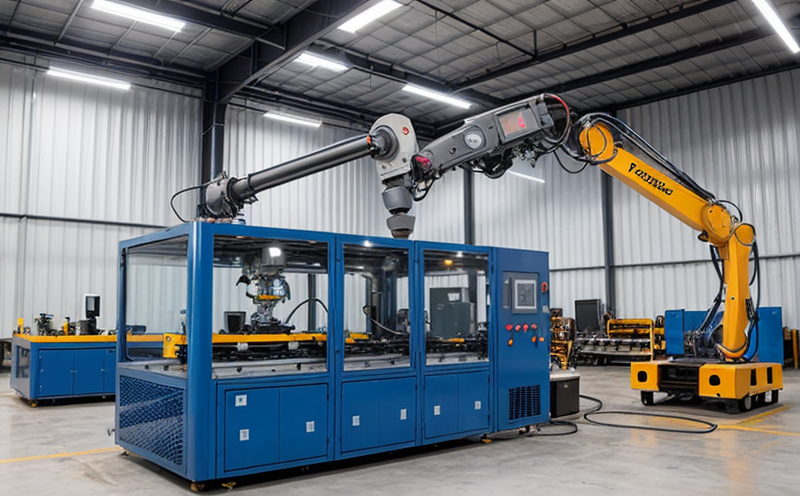ISO 28139 Automated Conveyor Robotics Testing
The ISO 28139 standard is specifically designed to ensure the reliability and safety of automated conveyors in industrial manufacturing environments. This service focuses on testing robotic systems integrated into conveyor lines, ensuring that they meet stringent international standards for performance, safety, and durability.
Automated conveyors are a critical component in modern industrial settings, playing a vital role in material handling processes. These systems must not only be efficient but also compliant with various regulatory requirements to ensure the safe operation of manufacturing plants. ISO 28139 provides comprehensive guidelines that address these needs by offering a structured approach to testing robotic components used within conveyor systems.
Testing under this standard involves multiple stages, including initial setup and calibration of the robotic system, followed by rigorous performance tests designed to evaluate key parameters such as speed accuracy, payload capacity, and response time. Safety checks form an integral part of these evaluations, ensuring that all aspects of the robotic conveyance are within acceptable limits.
The service provided adheres strictly to ISO 28139, providing detailed reports on test results which can be used by quality managers, compliance officers, R&D engineers, and procurement teams. These reports help in making informed decisions about equipment purchases and process improvements. By leveraging this standard, businesses can enhance their operational efficiency while maintaining high levels of safety.
Testing robotic systems integrated into conveyor lines is essential for several reasons. First, it ensures that the system operates within specified performance parameters, which are critical for efficient material handling. Second, compliance with international standards like ISO 28139 helps businesses avoid legal issues and maintain a positive reputation in their industry.
Thirdly, by identifying potential problems early on through thorough testing, companies can prevent costly downtime or accidents. Finally, this level of scrutiny allows for continuous improvement in robotic technology used across various sectors including automotive manufacturing, electronics assembly, food processing, etc.
Applied Standards
| Ammendment | Title | Description |
|---|---|---|
| A1:2020 | Guidelines for Testing Automated Conveyor Robotics | This ammendment provides detailed instructions on how to conduct tests according to ISO 28139. |
| A2:2022 | Enhanced Safety Criteria in Conveying Systems | This document updates the original standard by introducing additional safety measures specifically for robotic conveyors. |
Scope and Methodology
| Scope | Description |
|---|---|
| Performance Testing | Involves evaluating the speed accuracy, payload capacity, response time of robotic systems. |
| Safety Checks | Ensures all aspects of robotic conveyance are within acceptable limits as per ISO 28139. |
The methodology employed in this service is based on the latest updates to ISO 28139, ensuring that tests are conducted accurately and reliably. This approach involves a series of checks aimed at assessing both functional performance and safety aspects of robotic conveyors integrated into industrial settings.
Benefits
- Ensures compliance with international standards.
- Identifies potential issues early to prevent costly downtime or accidents.
- Enhances operational efficiency and safety in robotic systems used for material handling.
- Provides detailed reports that are valuable tools for decision-making by various stakeholders including quality managers, R&D engineers, etc.
- Aids continuous improvement initiatives within organizations.
- Reduces the risk of non-compliance penalties.
- Improves overall quality and reliability of robotic systems in use.
- Sustains a positive reputation among clients and partners.





